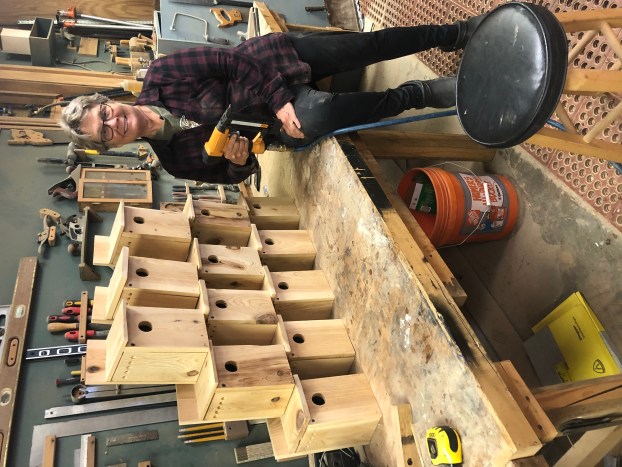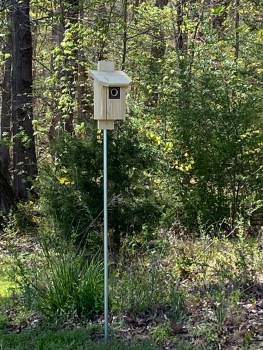FENCE is putting words into action
Published 9:59 am Friday, April 17, 2020
|
Getting your Trinity Audio player ready...
|
Earlier this spring, FENCE offered a special program on how to attract and protect the beloved Eastern Bluebird.
The presenter, Joe Sanders, is a local expert on this most beautiful native bird species. Following his talk volunteers at FENCE decided to spring into action using the knowledge shared at the program sponsored by the Kirby Fund of the Polk County Community Foundation and FENCE.
There is love in the air at FENCE. It involves Bluebirds!
FENCE is excited about the cheerful song of our bluebirds! With nesting season currently underway, FENCE is happy to announce the installation of several new nesting boxes. Bluebirds stay in North Carolina year-round and males begin to search for nesting sites in March, usually natural cavities or in nest boxes. Males are known for their brilliant blue color, rusty breast and white belly. Females have similar coloration, though their coloration appears duller.
Bluebirds feed almost exclusively on insects, though they are also known to eat the berries of dogwoods, hollies and elderberries. Bluebirds were once considered rare due to competition with more aggressive species and habitat loss. Their populations have been recovering significantly in recent years, largely through conservation efforts and the help of homeowners in creating nesting boxes specifically tailored to the species.
Interested in welcoming bluebirds into your own yard?
Consider constructing a box or planting native plants! Elderberry is an excellent choice for attracting and providing for bluebirds. Boxes should have a fixed floor, approximately 5×5 inches, and four walls. An entrance hole should be approximately 1 ½ inches, though no larger to avoid invasive bird species that will outcompete the bluebird, like the European Starling. Be sure to include ventilation and drainage holes in each corner of the box. An additional note, perches are not recommended for bluebird boxes. Boxes can be mounted on wooden, metal or PVC poles, approximately 5 feet high.
Male bluebirds begin to locate nesting sites as early as March and as late as June, so it is best to have new boxes installed by February. When selecting sites for box installations, keep in mind that bluebirds are known to be territorial during nesting season and typically will not build within 100 yards of another bluebird nest. Select a site that is near an open area that also has spots to perch nearby.
Already have bluebird boxes installed?
Monitor the boxes weekly. A bar of soap can be rubbed on the underside of the roof to repel wasps and other species. If you find a nest keep in mind that bluebirds construct nests using a combination of dried grass and pine needles and that their eggs are blue in color.
For more information, visit www.FENCE.org.
Submitted by Tracie Hanson







